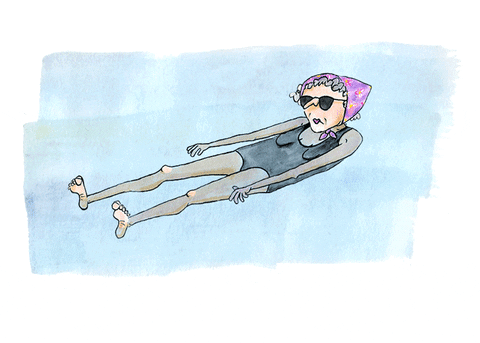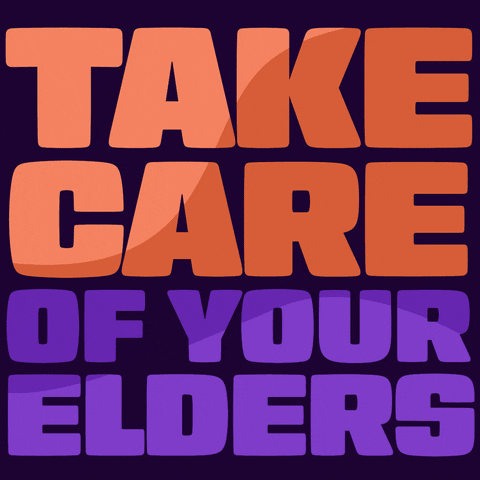Loneliness: The Silent Killer Stalking Our Elders

How often do you feel a pang of loneliness? For many elderly adults, that feeling is a constant, eroding their physical and mental wellbeing. Loneliness is more than just an emotional state, it's a public health crisis that can be as detrimental to your health as smoking 15 cigarettes a day.
In this post, I'll explore the alarming connection between loneliness and physical frailty in older adults. You'll learn about the various components of frailty, its consequences, and effective interventions to combat this often-overlooked threat to our senior loved ones' health and well-being.
The Dangerous Duo: Loneliness and Physical Frailty
Groundbreaking research from Amsterdam UMC and the University of Glasgow has revealed a disturbing link between loneliness and physical frailty in the elderly. Analyzing data from over 130 studies, the researchers found that loneliness contributes to the development of frailty, a condition characterized by unintentional weight loss, reduced walking speed, and decreased muscle strength.
This downward spiral of physical deterioration significantly increases the risk of adverse health outcomes, including falls, cognitive impairment, and even premature death. Alarmingly, the relationship between physical vulnerability and decreased social contact can be bidirectional, with each factor exacerbating the other, creating a vicious cycle that's difficult to break.
The Components of Physical Frailty
Physical frailty is a multifaceted condition that encompasses various forms of deterioration:
- Weight Loss: Unintentional weight loss is a significant indicator of frailty, often leading to muscle mass loss and a condition called sarcopenia, which further contributes to reduced walking speed and grip strength.
- Reduced Walking Speed: Slower walking speed is a hallmark of frailty, reflecting decreased physical function and an increased risk of adverse outcomes, including falls.
- Decreased Muscle Strength: Weakness, particularly as measured by grip strength, is another core component of frailty, affecting balance and mobility, and increasing the risk of falls.
The Consequences: A Domino Effect on Health
The consequences of physical frailty are far-reaching and can trigger a domino effect on various aspects of health and well-being:
- Increased Risk of Falls: Frailty causes decreased balance and mobility, significantly predicting falls within 12 months. Falls are often associated with increased age and frailty level, leading to disability, hospitalization, and even death.
- Cognitive Impairment: There is a strong association between physical frailty and cognitive impairment, with the co-occurrence of these conditions significantly increasing the risk of repeated falls.
- Adverse Health Outcomes: Physical frailty is linked to a range of adverse health outcomes, including hospitalization and premature mortality, reflecting a decline in physiological reserves and resistance to stressors.
Interventions: Breaking the Cycle
Combating loneliness and physical frailty in older adults requires a multifaceted approach that addresses the physical, social, and mental aspects of well-being. Effective interventions may include:
- Exercise: Regular physical activity, particularly walking, has been shown to improve physical function and may help postpone the onset of frailty.
- Nutritional Support: Nutritional supplementation and adherence to a healthy diet, such as the Mediterranean diet, can enhance muscle mass and function, potentially reducing the risk of becoming frail.
- Social Facilitation and Technology: Utilizing technology to facilitate social connections, such as video calls, social media, and online communities, can be particularly effective in reducing loneliness.
- Community Engagement: Encouraging participation in community activities, volunteering, and other social events can help older adults feel more connected and less isolated.
- Psychological Therapies: Counseling and therapy can address the underlying feelings of loneliness and help individuals develop strategies for building and maintaining social connections.
The time to act is now. By recognizing the profound impact of loneliness on the physical health of our elderly loved ones, we can take proactive steps to combat this silent killer and ensure a better quality of life for all.

A Multipronged Approach
Combating the detrimental effects of loneliness and social isolation in older adults demands a comprehensive, multipronged approach that addresses the complex interplay of physical, social, and psychological factors. While there is no one-size-fits-all solution, effective interventions often involve a combination of strategies tailored to individual needs and preferences.
Technological Interventions: Leveraging the power of technology can be a game-changer in mitigating loneliness among seniors. Video calls, social media platforms, and online communities provide invaluable opportunities for older adults to connect with loved ones, engage in virtual activities, and foster new social connections. However, it is crucial to ensure that individuals have access to and are comfortable with using these technologies, as a lack of digital literacy can exacerbate feelings of isolation.
Direct Interventions: These interventions aim to directly facilitate social connections, either by rekindling existing relationships or fostering new ones. Group-based activities centered around shared interests, education, or support can be particularly effective, especially when older adults are involved in the planning process. One-on-one approaches, such as befriending services or peer support programs, can be invaluable for those facing significant barriers to social engagement.
Environmental Modifications: Creating age-friendly environments that promote social connectedness is another crucial aspect of intervention. This includes ensuring access to reliable transportation services, promoting volunteerism opportunities, and designing community spaces that encourage social interaction and engagement.
Cognitive-Behavioral Strategies: Equipping older adults with cognitive-behavioral strategies can empower them to maintain social connections even during periods of physical distancing or isolation. These strategies may include mindfulness practices, anxiety-coping techniques, and problem-solving skills to find creative ways to connect with others.
Community Support: Fostering a sense of community and social capital can play a vital role in combating loneliness among older adults. Neighborhoods with strong social ties and a culture of mutual support can provide invaluable assistance to seniors who may need help with routine tasks, enabling them to age in place while maintaining their independence and social connections.
Public Health and Social Policies: Addressing loneliness requires a coordinated effort from various sectors, including healthcare, social services, and policymakers. Public health campaigns, community-based interventions, and social policies that promote social connectedness among older adults can have far-reaching impacts on their well-being.
Individualized Interventions: It is essential to recognize that loneliness and social isolation can manifest differently among individuals and across diverse populations. Tailoring interventions to specific needs, cultural backgrounds, and levels of loneliness experienced is crucial for ensuring their effectiveness. Ongoing research should aim to identify the most appropriate interventions for different contexts and populations.
Anecdotes
Technological Interventions
Mrs. Rodriguez, an 82-year-old widow, used to feel extremely isolated after her children moved out of state. However, her granddaughter helped her set up a video calling app on her tablet, and now they have weekly "virtual coffee dates." Mrs. Rodriguez has also joined an online book club, where she can discuss her favorite novels with others her age from the comfort of her home.
Direct Interventions
Mr. Khan, 75, was struggling with loneliness after losing his wife of 50 years. His doctor connected him with a local "buddy program" that paired him with a volunteer who visited him once a week. Over games of chess and long walks, Mr. Khan and his buddy developed a close friendship, giving him a renewed sense of purpose and companionship.
Environmental Modifications
The town of Riverview launched an "Age-Friendly" initiative, working with urban planners and community members to make the downtown area more accessible and inviting for older residents. They installed benches along walking paths, improved lighting, and created a central plaza with shaded areas for socializing. These changes encouraged more seniors to venture out, fostering impromptu conversations and connections.
Cognitive-Behavioral Strategies
At the local senior center, a therapist leads a monthly workshop on "Staying Connected." Participants learn mindfulness techniques to combat anxiety and negative thought patterns that can exacerbate loneliness. They also practice problem-solving skills to find creative ways to build and maintain social ties, such as joining a club or volunteering.
Community Support
In the close-knit neighborhood of Elmwood, a network of "Neighborhood Helpers" has emerged. These volunteers assist older residents with tasks like yard work, grocery shopping, and transportation to medical appointments. This assistance not only provides practical support but also facilitates social connections, as the helpers often stay for a chat and a cup of tea.
Public Health and Social Policies
The state of California launched a public awareness campaign called "Connect for Life" to educate the public about the health risks of loneliness and social isolation among older adults. The campaign promoted community resources, such as friendly visitor programs and support groups, while also advocating for policies that encourage age-friendly housing and community design.
Individualized Interventions
Mrs. Lee, an 80-year-old Korean immigrant, was struggling with loneliness and cultural isolation. Her social worker connected her with a local Korean community center that offered language classes, cultural activities, and peer support groups specifically tailored to the needs of older Korean Americans. This culturally-specific intervention helped Mrs. Lee build a strong support network and a sense of belonging.
These examples illustrate how a diverse range of interventions, from technological solutions to community-based programs and individualized support, can effectively address the complex issue of loneliness among older adults. By combining these strategies and tailoring them to specific needs and preferences, we can create a supportive environment that fosters social connectedness and promotes overall well-being.

Key Takeaways
- Loneliness is a significant public health concern, with the U.S. Surgeon General comparing its impact to smoking 15 cigarettes a day.
- Research from Amsterdam UMC and the University of Glasgow reveals a link between loneliness and physical frailty in older adults, contributing to conditions like weight loss, reduced walking speed, and decreased muscle strength.
- Physical frailty increases the risk of adverse health outcomes, including falls, cognitive impairment, hospitalization, and premature mortality.
- The relationship between physical vulnerability and decreased social contact can be bidirectional, creating a vicious cycle that exacerbates both conditions.
- Certain groups of older adults, such as immigrants, LGBTQ+ individuals, minorities, and victims of elder abuse, are at higher risk for experiencing loneliness and social isolation.
- Effective interventions to combat loneliness require a multifaceted approach addressing physical, social, and mental aspects of well-being.
- Technological interventions, such as video calls, social media, and online communities, can help facilitate social connections for older adults.
- Direct interventions, like group activities, befriending services, and peer support programs, can foster new relationships and reconnect existing ones.
- Environmental modifications, community support, cognitive-behavioral strategies, and public health policies can promote social connectedness and age-friendly environments.
- Interventions should be tailored to the specific needs, cultural backgrounds, and levels of loneliness experienced by individuals or groups of older adults.
Frequently Asked Questions
Four Types of Loneliness:
There are four distinct types of loneliness identified by psychologists:
- Emotional Loneliness: This type arises from the lack of a deep, emotional attachment to someone, like a close friend or partner.
- Social Loneliness: This type is characterized by a lack of friends to go out with, or who share our hobbies or interests.
- Situational Loneliness: This type is associated with specific situations or life changes, such as moving to a new location or experiencing a significant loss.
- Chronic Loneliness: This type is a persistent feeling of loneliness that can have serious impacts on both physical and mental health.
Who to Talk to When You're Lonely:
When you're feeling lonely, there are several avenues for finding support:
- Reach out to a friend or family member.
- Seek professional help from a health professional or counsellor.
- Join online communities, support groups, or forums where individuals facing similar struggles come together.
- Use services like the Crisis Text Line, which offers free, 24/7, confidential support through text message.
How to Be Okay with Loneliness:
Here are some strategies to cope with loneliness:
- Reframe your perspective on being alone.
- Practice gratitude to appreciate the positive aspects of your life.
- Join a class or club to meet people who share your interests.
- Volunteer for a cause you believe in.
- Exercise and spend time outdoors.
- Limit your use of social media to avoid comparing yourself to others.
How a Lonely Person Behaves:
Lonely individuals may exhibit certain behaviors:
- They may gain weight quickly due to comfort eating.
- They may feel down and lack motivation.
- They may become addicted to social media.
- They may experience physical pain with no logical explanation.
- They may perceive time as passing too quickly, too slowly, or to stop altogether.
- They may feel wary of social situations or perceive interactions with others more negatively.
Biggest Cause of Loneliness
The biggest causes of loneliness include situational variables such as physical isolation, moving to a new location, and divorce. The death of someone significant in a person's life can also lead to feelings of loneliness.
Root of Loneliness:
The root of loneliness is often associated with a discrepancy between one's desired level of social relations and their actual level in number or quality⁹. It can also stem from a lack of authenticity in relationships.

Thank you for reading this post!
If you found it helpful or informative, please consider sharing a 7 day free trial with your friends, family, or colleagues who might benefit from it.
Your support helps me reach more people and spread awareness on important topics like this. Together, we can make a difference!
References
https://www.cdc.gov/aging/publications/features/lonely-older-adults.html
https://www.ncbi.nlm.nih.gov/pmc/articles/PMC8302356/
https://www.ncbi.nlm.nih.gov/pmc/articles/PMC7437541/
https://journals.sagepub.com/doi/10.1177/17456916221127218
https://www.nature.com/articles/s41572-022-00355-9
https://hms.harvard.edu/news/how-older-adults-can-build-resilience-against-loneliness
https://www.cdc.gov/emotional-wellbeing/social-connectedness/loneliness.htm
https://www.amsterdamumc.org/en/research.htm
https://pubmed.ncbi.nlm.nih.gov/38432249/
https://www.ncbi.nlm.nih.gov/pmc/articles/PMC9332849/
https://www.ncbi.nlm.nih.gov/pmc/articles/PMC7355345/
https://link.springer.com/article/10.1007/s12603-017-0971-7
https://pubmed.ncbi.nlm.nih.gov/36852758/
https://www.sciencedirect.com/science/article/pii/S0002916523294241
https://bmcgeriatr.biomedcentral.com/articles/10.1186/s12877-022-03383-y
https://link.springer.com/article/10.1007/s40520-019-01467-1
https://jamanetwork.com/journals/jamainternalmedicine/articlepdf/410155/ioi50225.pdf
https://bmcgeriatr.biomedcentral.com/articles/10.1186/s12877-018-0967-0
https://www.ncbi.nlm.nih.gov/books/NBK557966/
https://www.ncbi.nlm.nih.gov/pmc/articles/PMC7233208/
https://www.ncbi.nlm.nih.gov/pmc/articles/PMC7261393/
https://bmcpublichealth.biomedcentral.com/articles/10.1186/s12889-020-8251-6
https://www.cdc.gov/emotional-wellbeing/social-connectedness/affect-health.htm
https://link.springer.com/article/10.1007/s11606-023-08517-5
https://www.ncbi.nlm.nih.gov/pmc/articles/PMC3696179/
https://www.cdc.gov/aging/publications/features/lonely-older-adults.html
https://www.cdc.gov/emotional-wellbeing/social-connectedness/loneliness.htm
https://www.nature.com/articles/s41572-022-00355-9
This article was written by Ariadna Paniagua, an experienced writer and editor for several institutions, papers, and websites.




